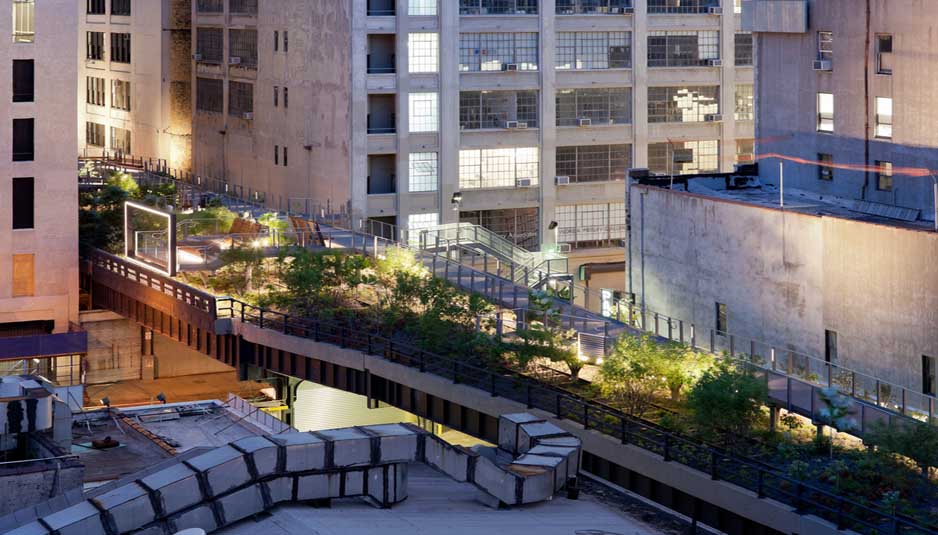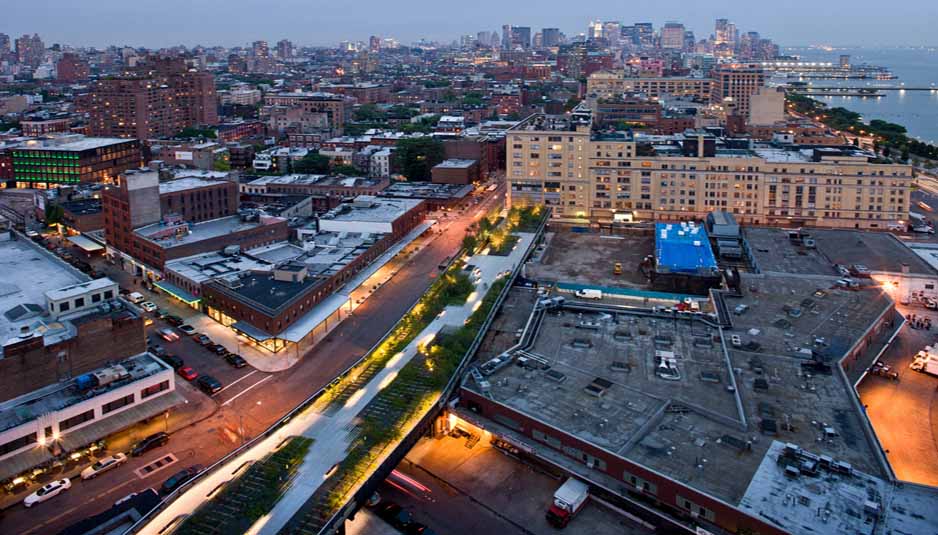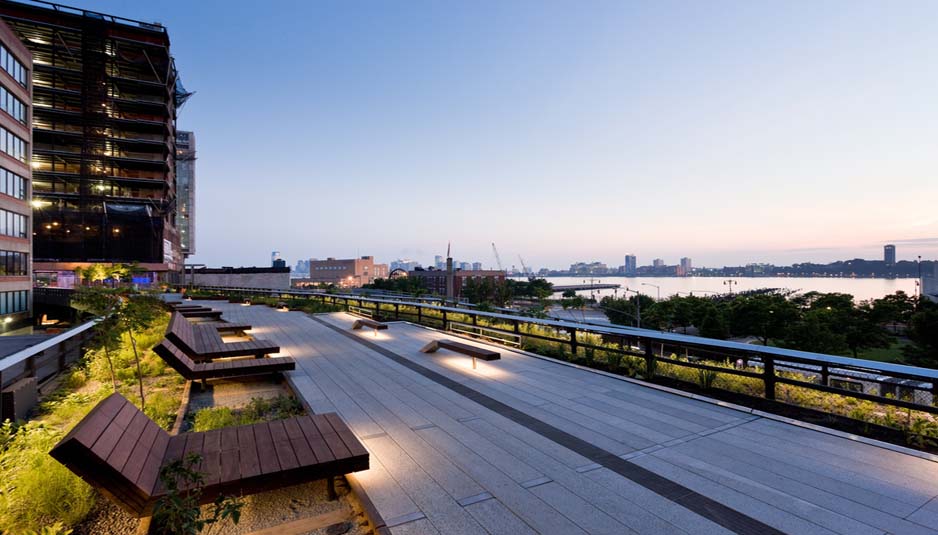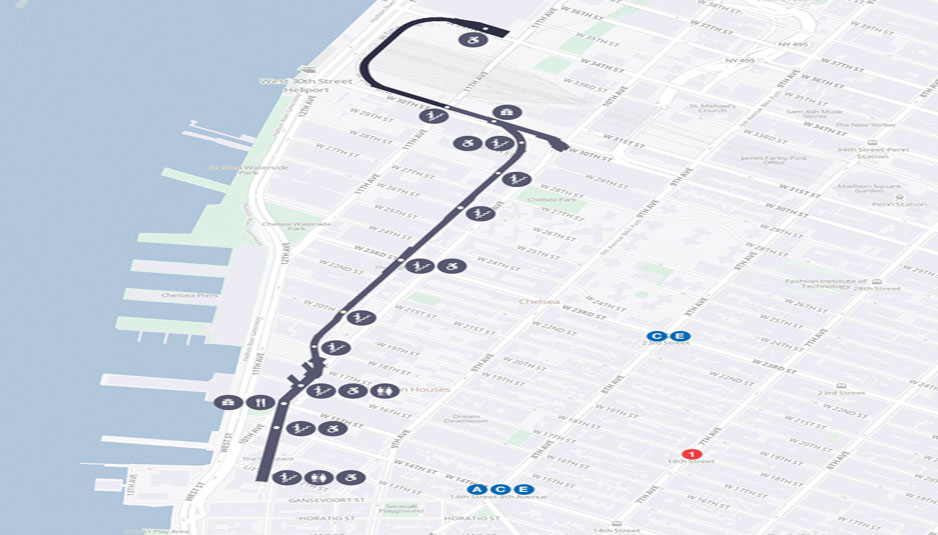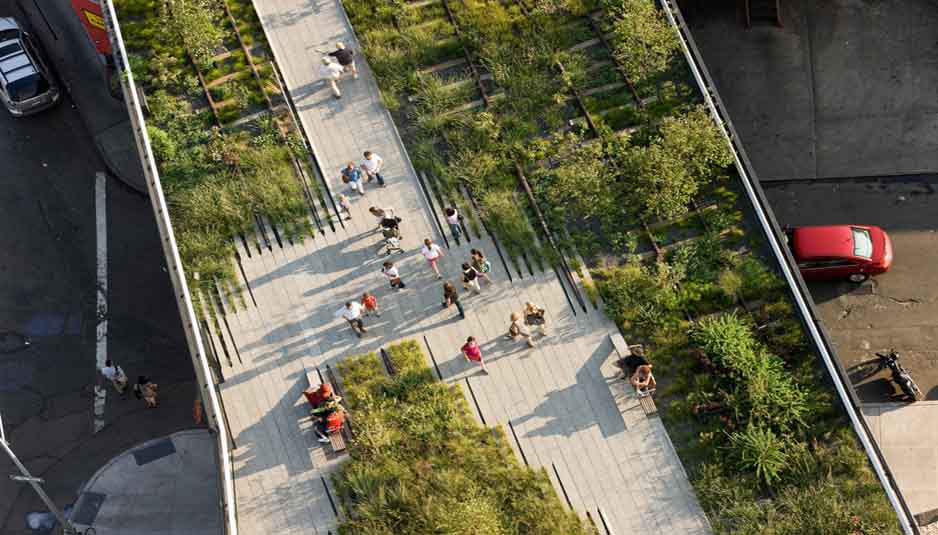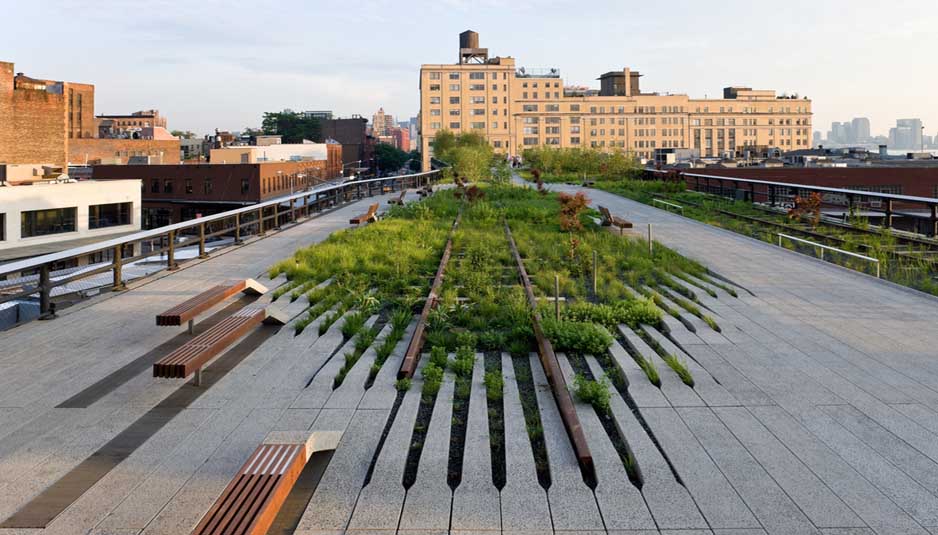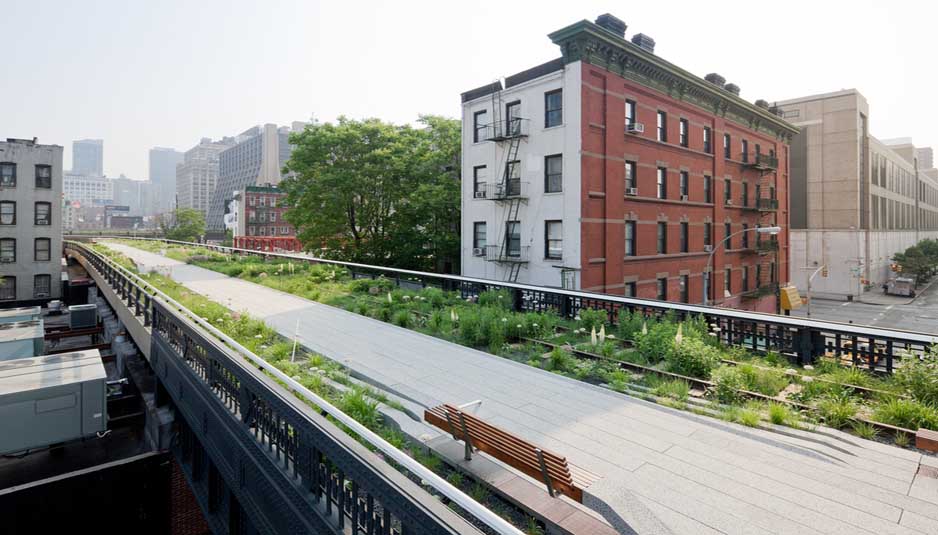High Line Park: the green lung in the sky of New York
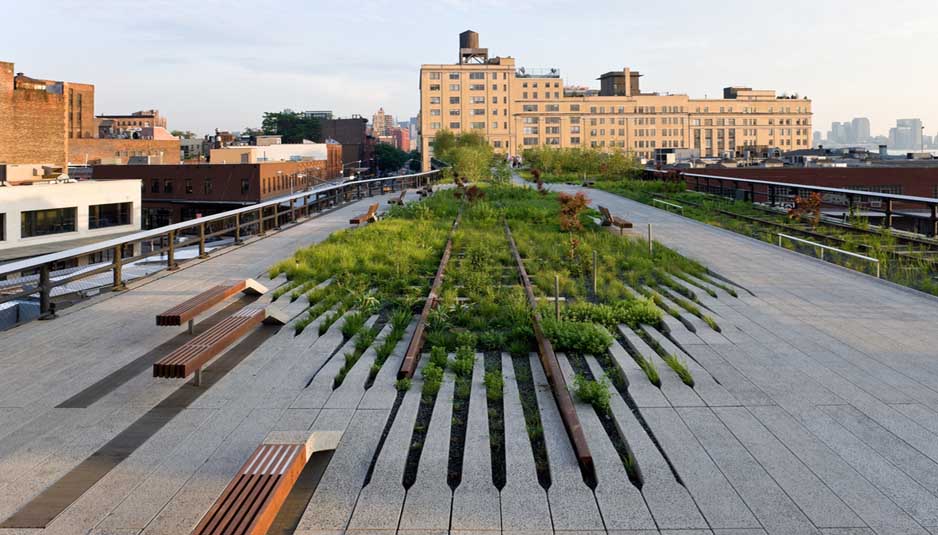
museumofthecity.org
High Line Park, also known as the “Park on the Sky” is the new park of New York that extends for a length of 1.6 km, 10 meters in height. It is the result of the redevelopment of an elevated rail line built in 1930 called the West Side Line, which runs through the south-west of Manhattan, Chelsea. This line allowed the transit of the many freight trains when the city was an important industrial hub, in order to eliminate the dangerous crossings between ordinary roads and railways.
Since the 80s, the versatility of the transport has not made this infrastructure necessary until it was abandoned. Despite proposals for demolition in 1999 was formed the non-profit organization Friends of the High Line, which has proposed to the city authorities to transform the old rail line in a raised park.
Through this association,with the team constituted by the landscape architect-urbanist architects James Corner and Diller Scofidio + Renfro, it was possible to save a piece of history that was about to disappear.
The redevelopment works began in 2006, and the first portion (between Gansevoort Street and 20th Street)was opened to the public in 2009 and the second portion (which connects 20th Street to 30th Street) in 2011. The third and last section was officially opened to the public September 21, 2014.
The new park of New York is characterized by plants, shrubs and trees chosen favoring native species, while the green grew on the railway line has been incorporated into the project. There are not only the thick vegetation, but also fountains and streams, benches carved from old railway carriages and even a small amphitheater with a staircase overlooking the street.
The recovery of the High Line in New York has allowed the city to have a new green lung, transforming this area in a center of social, recreational, cultural and artistic activities. It is possible to say certainly that this historic part of the city, preserved through another appearance and other functions, will continue to live and be lived in time.
Header image credits: museumofthecity.org Gallery images credits: museumofthecity.org, thehighline.org
